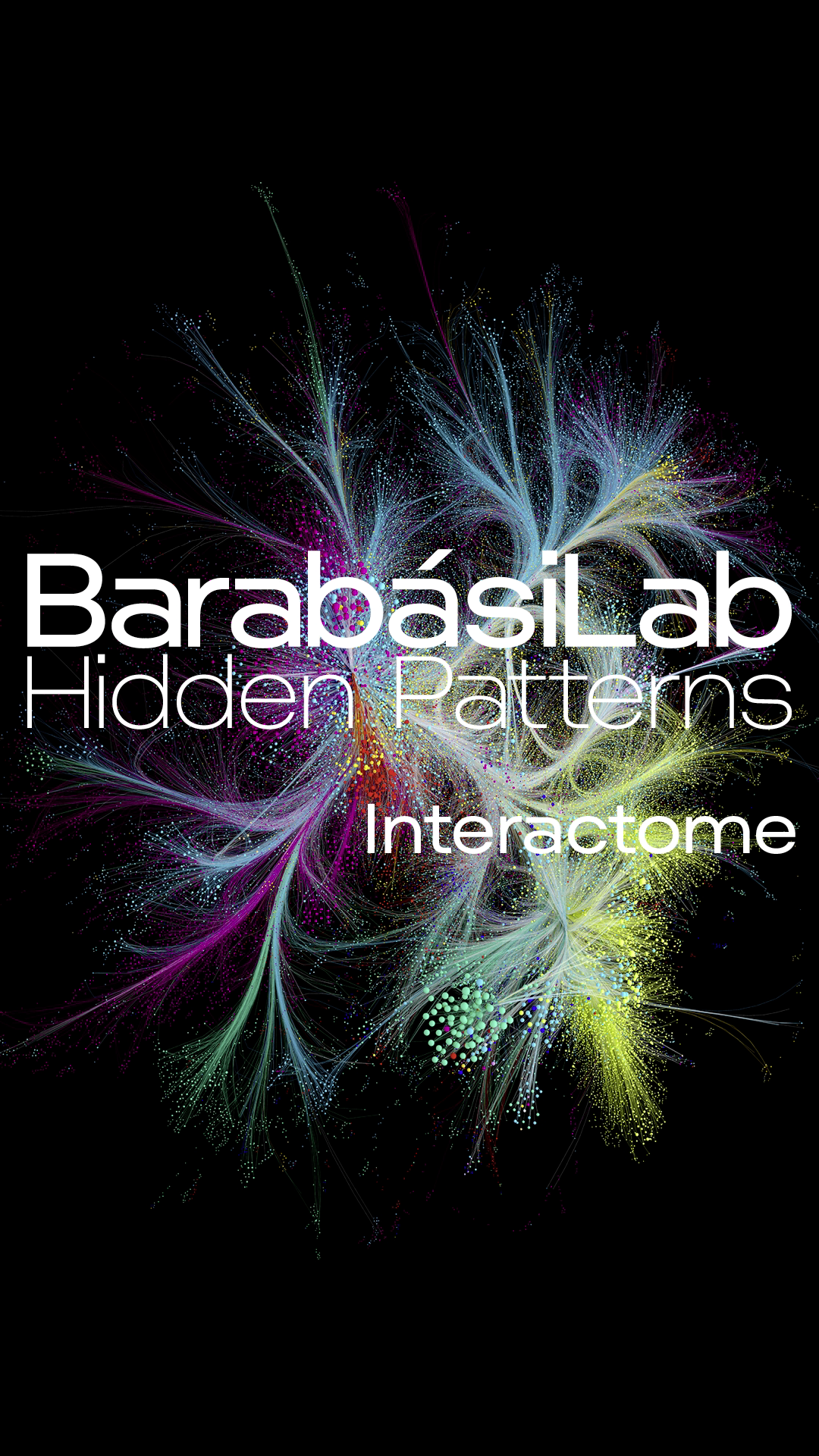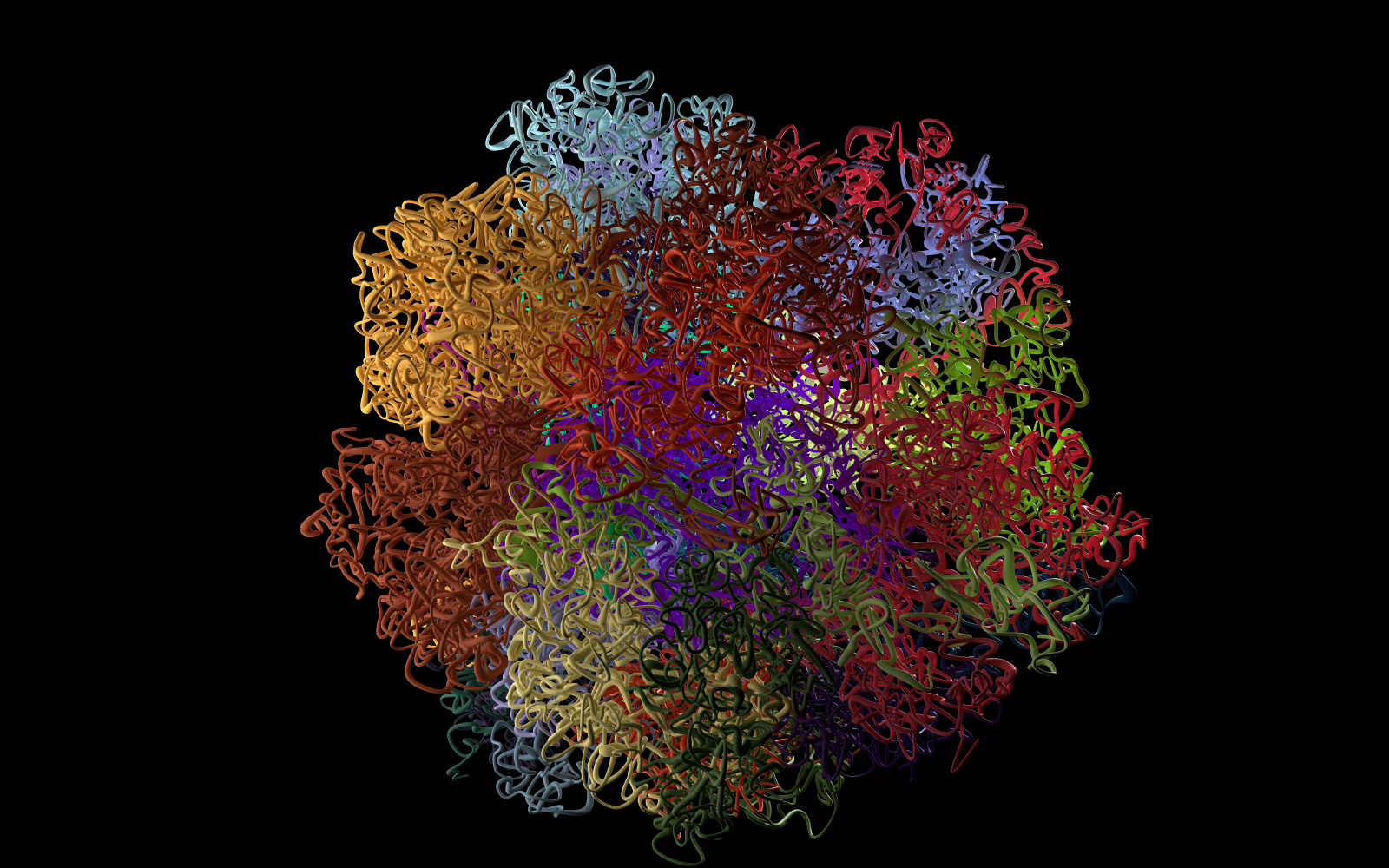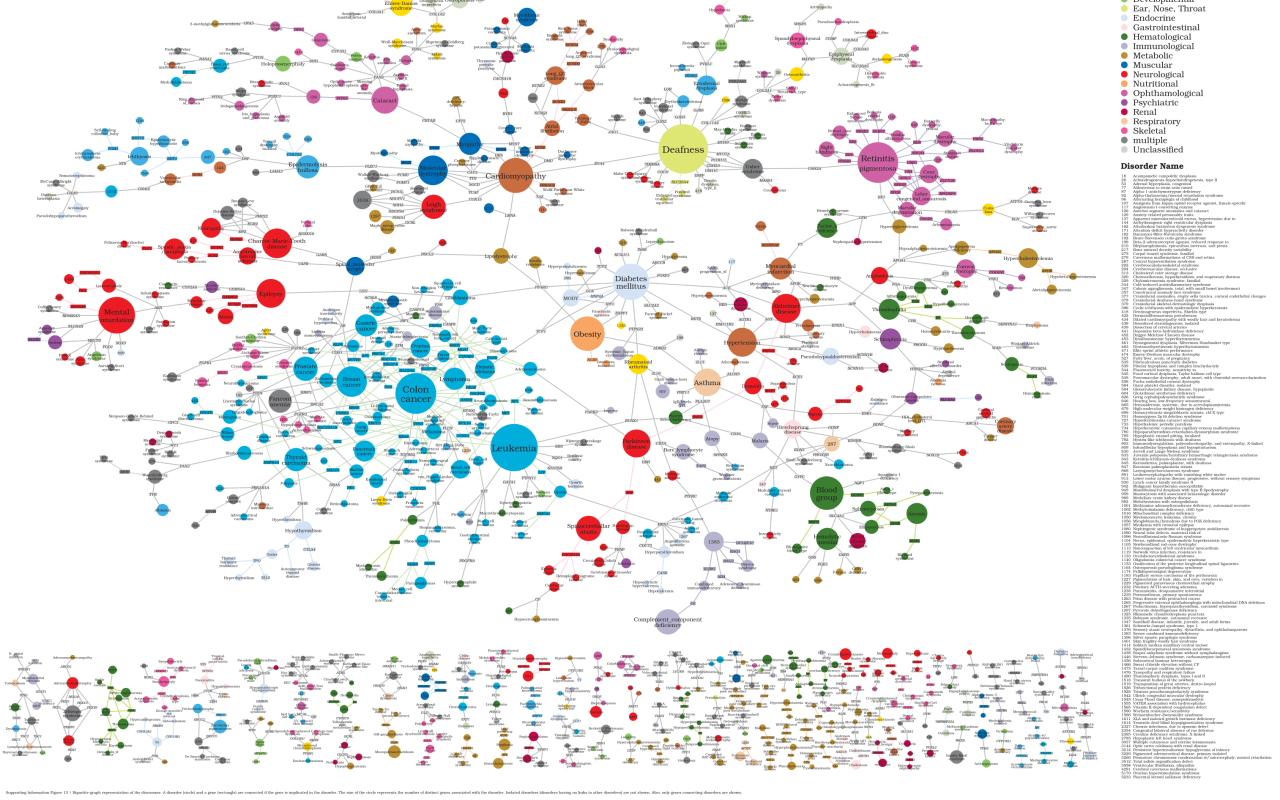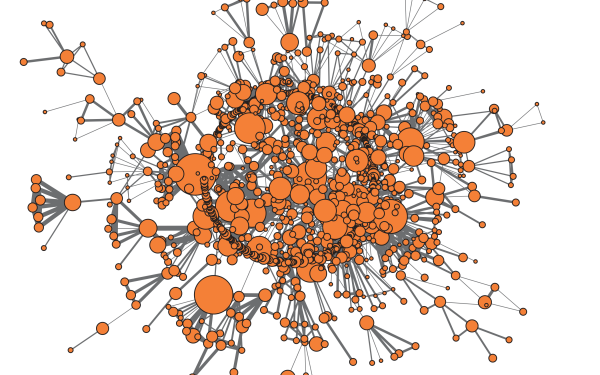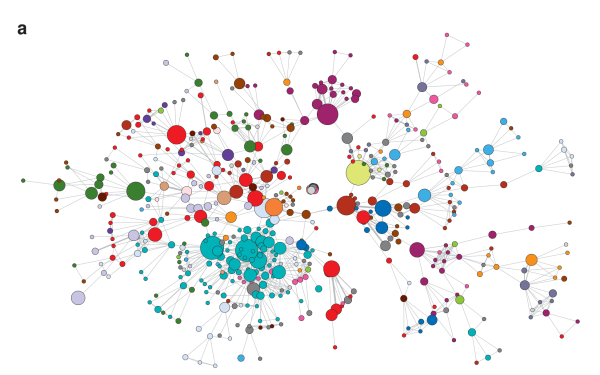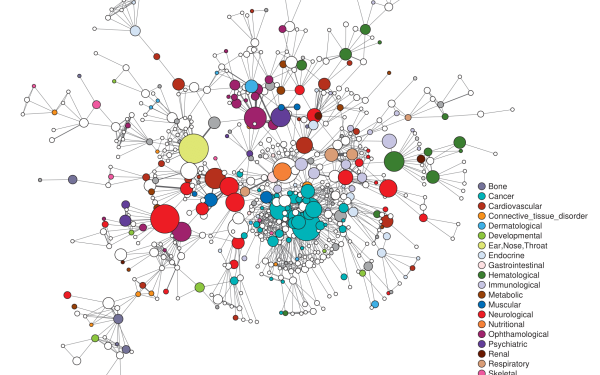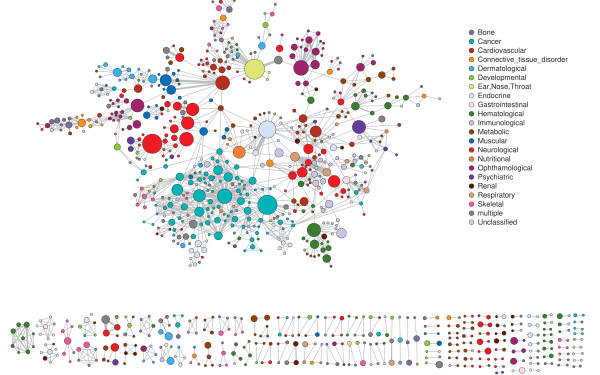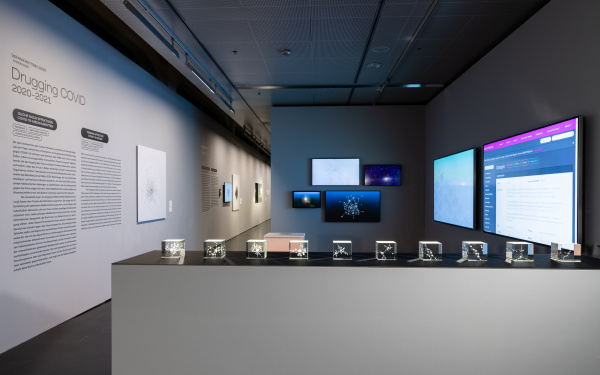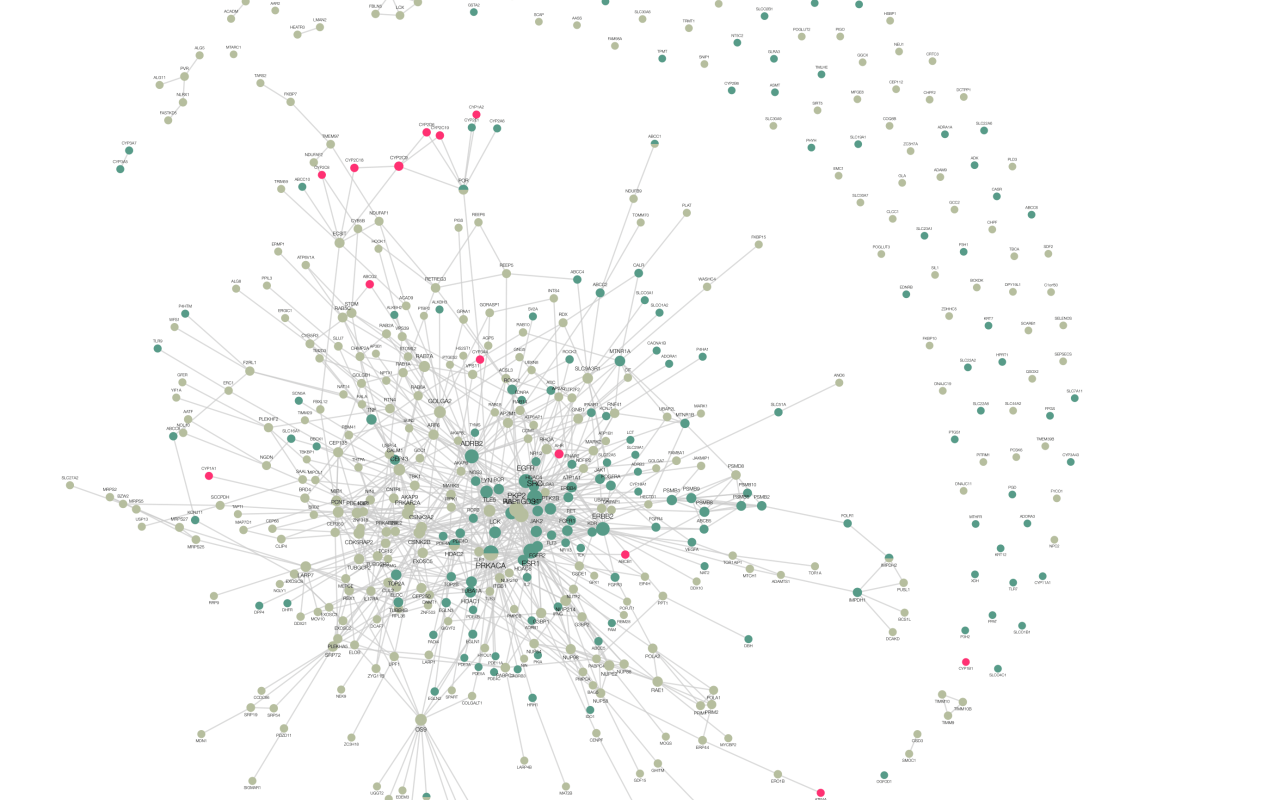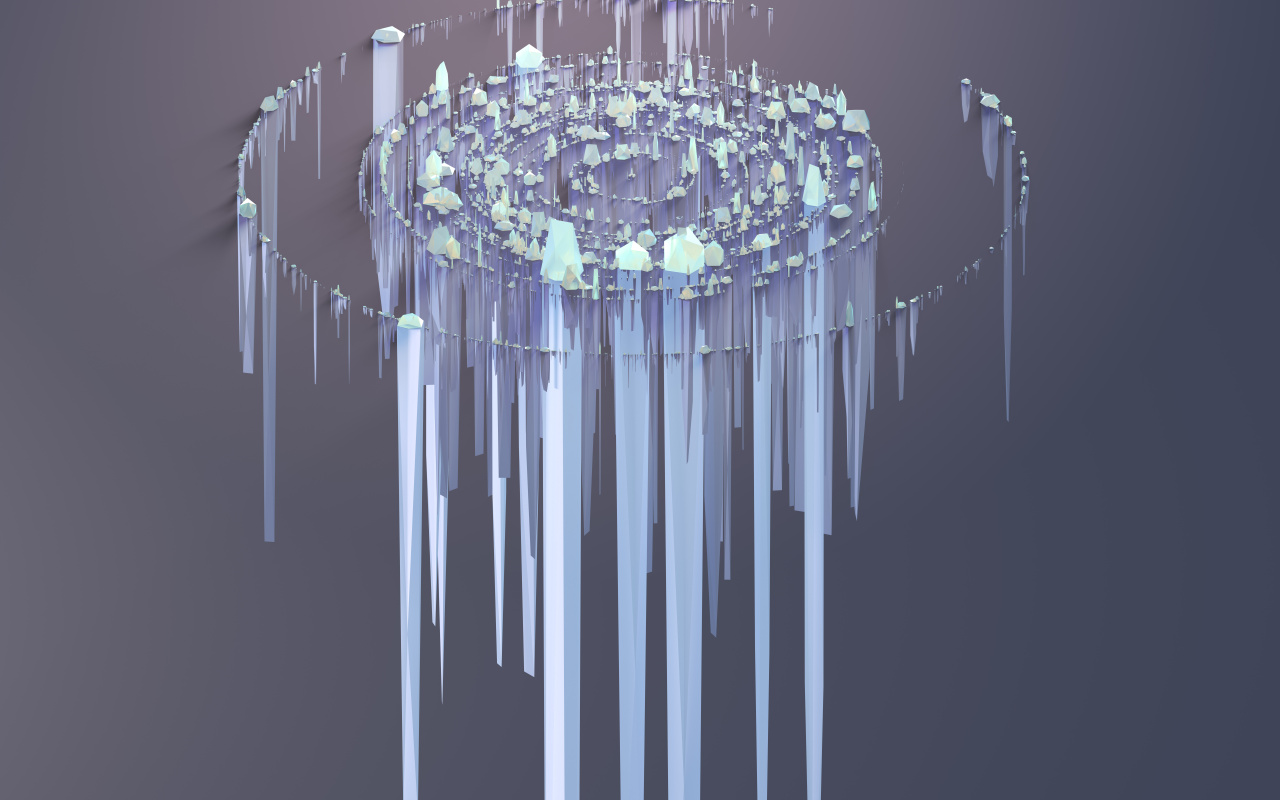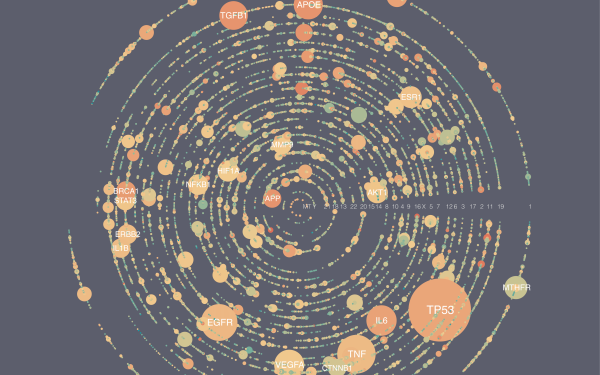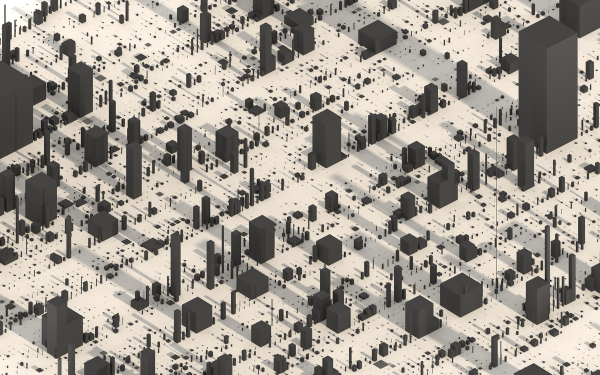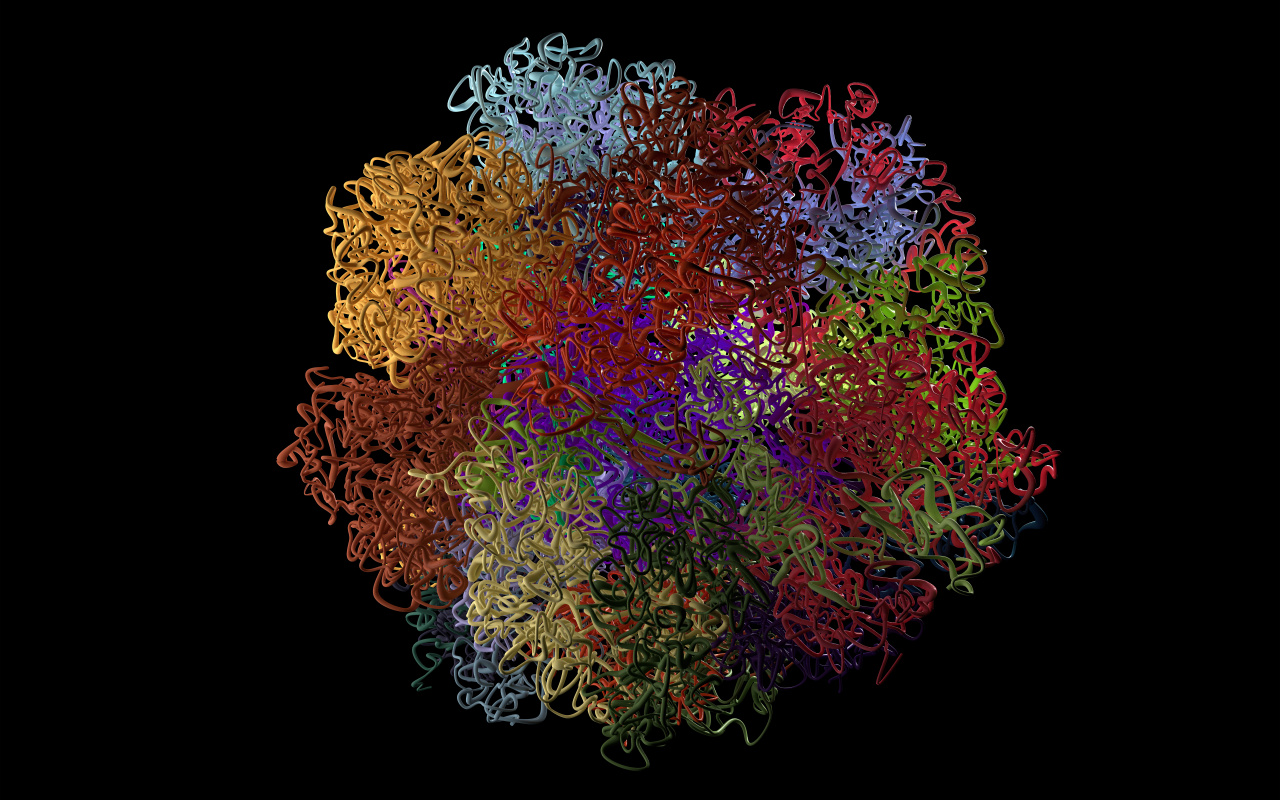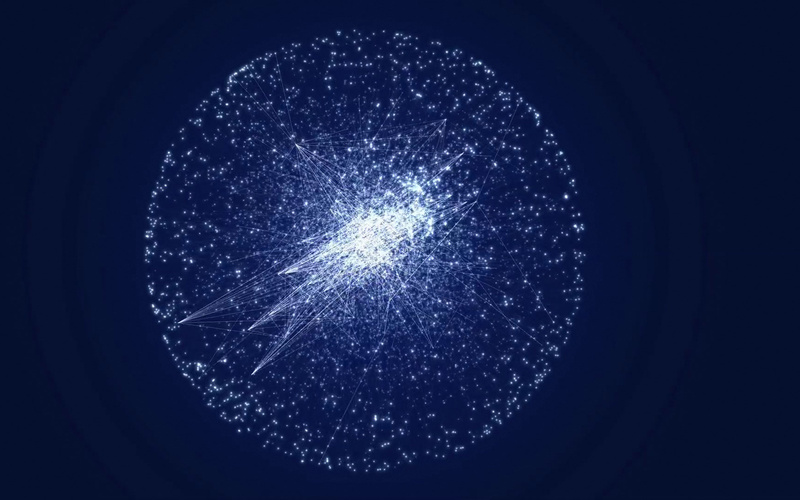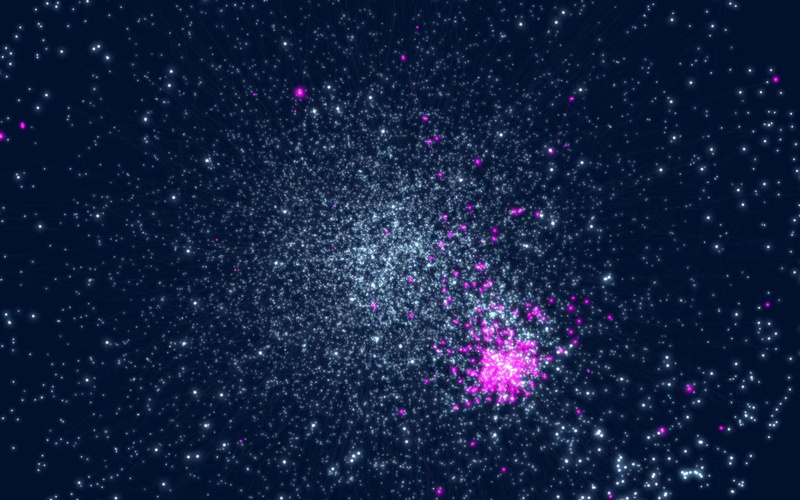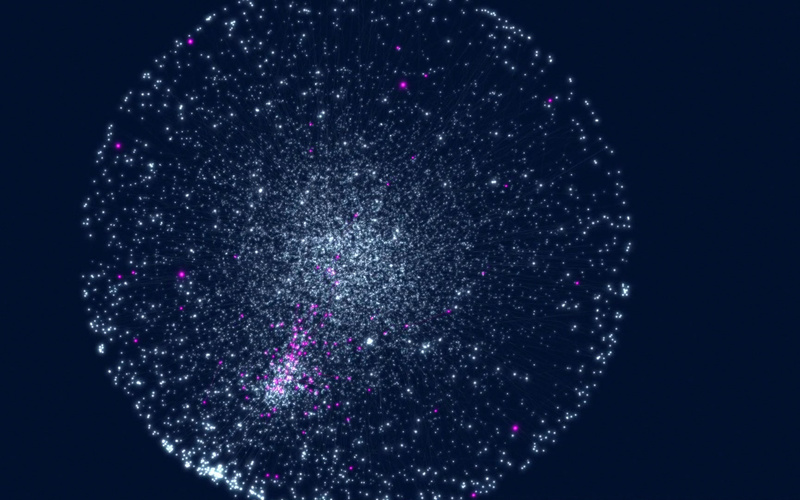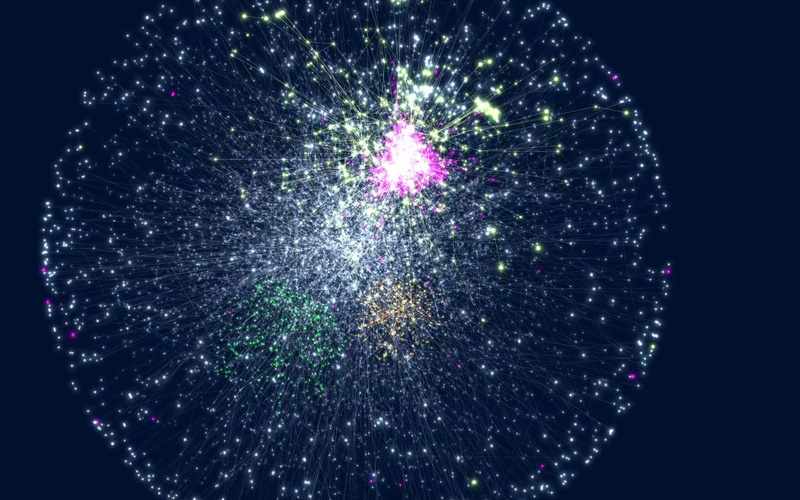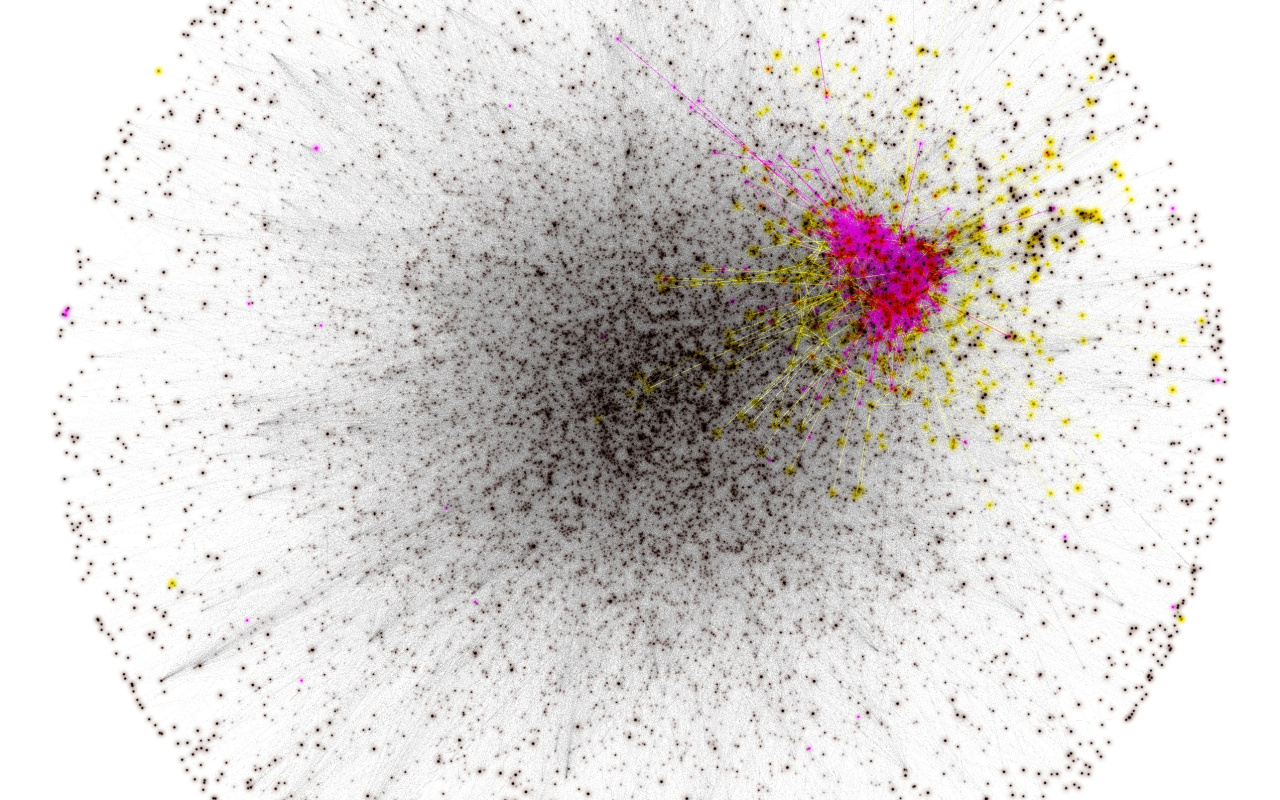Diseasome
2007–2021
-
Network Medicine
-
Human Genome Project
-
genes
-
diseases
-
health
The Human Disease Network | video commentary by Albert-László Barabási
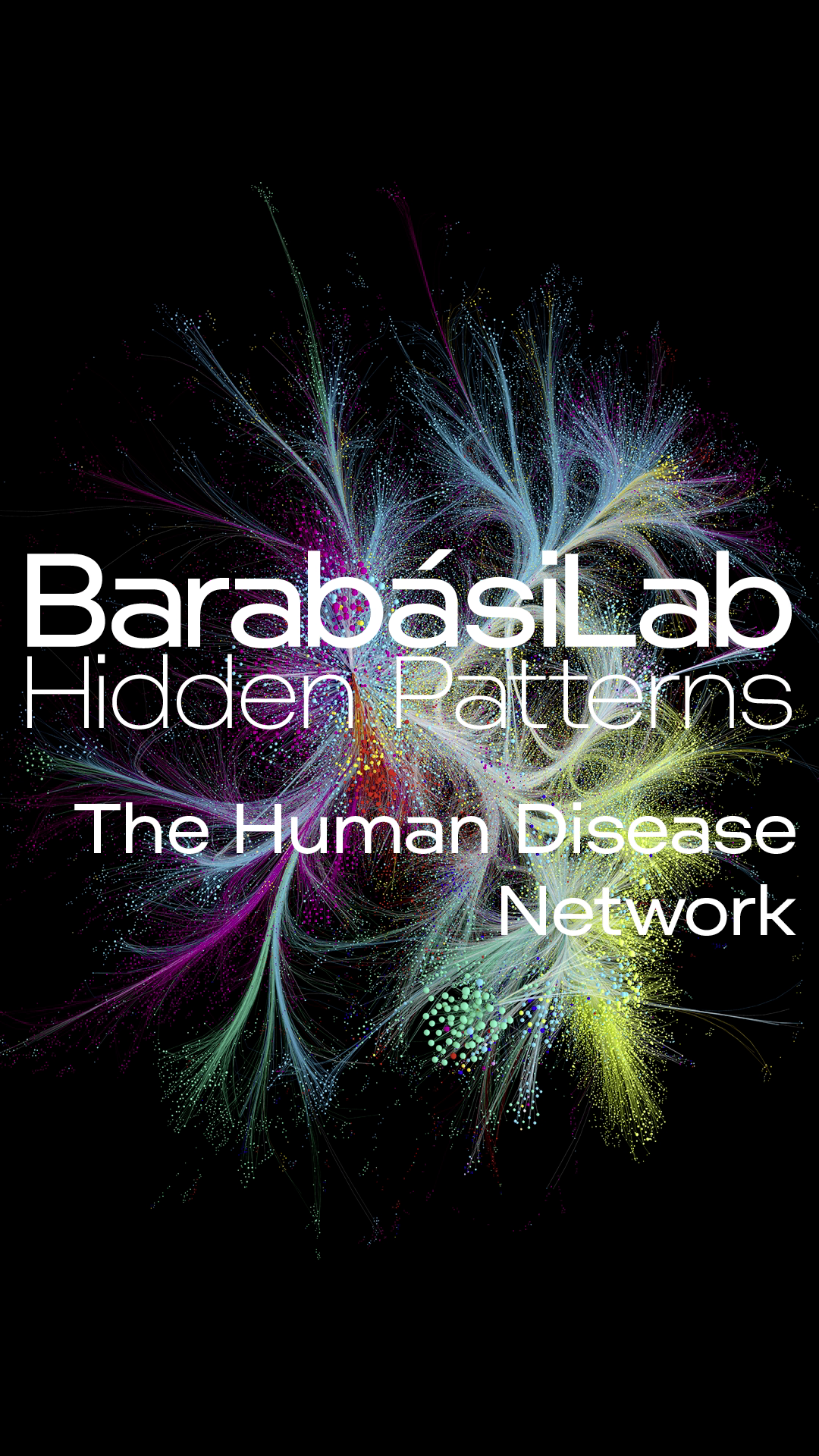
The Human Disease Network | video commentary Albert-László Barabási
The projects on display in this section reflect the BarabásiLab’s longstanding engagement with aspects of medicine, such as human diseases, genetics, and most recently, the search for effective drugs for COVID-19.
The publication of the draft of the human genome in 2001 has contributed to an explosion of research in genetics, allowing researchers to link diseases to specific genes. 2005 to 2006, Albert-László Barabási was working at the Dana-Farber Cancer Institute at Harvard Medical School in the USA and found himself wondering what these many independent discoveries said about the relationships between diseases. »The Human Disease Network«, published in 2007, visualizes the deep genetic connectedness of diseases. Each node of the network shows a different disease. The classes to which the diseases belong are marked in color: cancers are in the blue color spectrum, neuronal diseases in the red. The size of the node reflects the number of genes responsible for the disease; this was the first time BarabásiLab encoded information in node size. The links correspond to the genes that connect the two diseases, capturing their common genetic roots. The process images shown here document the evolution of the visualization up to the final design. »The Human Disease Network« is one of the BarabásiLab’s most reproduced network visualizations.
Drugging COVID (2020–2021)
-
Finding effective COVID-19 drugs
pandemic
network medicine
artificial intelligenceWith the arrival of the coronavirus pandemic, the BarabásiLab turned its attention toward ascertaining which existing and approved drugs might be effective against COVID-19. The SARS-CoV-2 virus hijacks cells by attacking selected human proteins. Drugs that block the virus’s access to these proteins may be able to prevent it entering the cells and infecting the human organism. Starting on March 2020, the BarabásiLab and collaborators at Harvard developed tools based on artificial intelligence and network medicine, to identify, among the 6000 existing drugs, those that could show effectiveness against the infection. These drugs were later tested experimentally by scientists at Boston University.
The »Drugging COVID« visualizations capture the research process. They show the 3D rendering of the tested drugs, together with the region of the subcellular network that is attacked by the virus. Every drug is represented with all the information on it that is available to doctors and patients. Each glass cube exhibited corresponds to one drug that has been found to be effective against the virus; the laser-engraved sub-networks show the region of the human protein interaction network used by the algorithms to predict the efficacy of that drug. An interactive video installation allows the totality and the immense number of different drugs tested, as well as their modes of action, to be grasped and explored. It illustrates the enormous space doctors must search to find effective cures, and shows how network science can aid in this quest.
The Human Genome Project (2021)
-
Genome Revolution
human genome project
20th anniversary
»Nature«
Scientific impact
»The Book of Life«The BarabásiLab was invited to design the cover of the »Nature« issue celebrating the 20th anniversary of the Human Genome Project (HGP), often called »The Book of Life«. Published in in February 2021, the cover and the paper inside trace the history of the HGP, an international research project, which published its main product, a map of the human genome, in 2001. The BarabásiLab mapped out all scientific publications focusing on individual genes between 1900 and 2020. The cover image shows the human genome—the entire genetic information of a cell—by means of 25 rings. Each ring represents a human chromosome. On these rings, a total of 19,775 icebergs of various sizes correspond to individual genes. While the area above the imaginary water line of each iceberg measures the scientific interest in that gene preceding the HGP, the under-water depth shows the interest that followed the unveiling of the human genome. The width of the base of each iceberg captures the number of diseases associated with the gene.
BarabásiLab has developed other representations of the same data in addition to the iceberg metaphor. For one, it built an imaginary Genetown. The other represents the genome as it crumples into a cell’s nucleus. The BarabásiLab visualizations illustrate the immense impact of the HGP on genetic research, which enables the study of the genetic roots of human diseases and drives the search for effective drugs. It also shows that many different visual solutions can represent the same dataset.
Interactome (2012)
-
Network Medicine
Protein-Interactions
Lung diseasesThe human interactome, capturing all molecular interactions within a human cell, is a network of 13,000 human proteins connected by 141,000 protein interactions. Since such a large number of nodes and links cannot be visualized in a single representation, only a small fraction of all links is ever shown in the BarabásiLab videos.
Highlighting the genes involved in asthma (purple) and chronic obstructive pulmonary disease (COPD) (yellow) illustrates how proteins involved in the same disease cluster at the same network neighborhood, often being linked to each other. The visualization of the video »Interactome 2« shows the discovery of the asthma disease module, highlighting how the network medicine algorithm developed by BarabásiLab localizes asthma within the interactome. It is difficult to see the variations and tiny molecular differences between asthma patients. And yet, at the molecular level in their networks, there are unique, individual changes all result in the same outcome, preventing these people from breathing normally.
Interactome | video commentary by Albert-László Barabási
